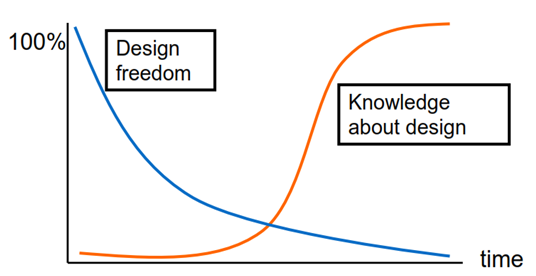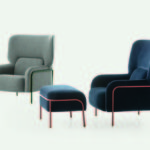WE LISTEN. WE DESIGN. WE DELIVER.
We strive to elevate a space with the specific style and mood in mind while also maximizing functionality. Maintaining an intricate balance between the luxurious and functional is our top priority to create a space that property owners and their guests will love. We fuse together design elements from multiple styles to create a cohesive aesthetic, which is not only unique but also utilizes the full potential of the property.
Below is an elaboration of the interior design & decorating services we provide:
Interior Design Services
An interior design concept is a central theme that all the project’s design elements are focused upon. It begins as an idea and is then brought to reality through the design process and careful planning. At its best, an interior design concept is a visual theme that evokes a specific mood by considering geographical and historical data, the project’s exterior architecture, and of course, the client’s preferences, lifestyle, and family factors. It functions as a roadmap, turning an idea into reality by strategically using space, finishing materials, furnishing, colors, and art.
Concept development consists of three detailed stages:
- Clarification of the client’s requirements
- Creation of concept(s)
- Concept selection and approval by the client
Decisions made during the early stages of design tightly constrain future options. The diagram below illustrates the correlation between design freedom and project progress.

Space planning
Space planning is a fundamental element of the interior design process. The goal of space planning is to determine the purpose, functional requirements, and basic layout of specific areas of the space. It consists of an in-depth analysis of how the space is to be utilized, traffic patterns, furniture, and area rug layouts as well as locations of the Audio/Video equipment and so on.
Interior space design
Interior space design addresses elements of a project’s interior space such as floors, walls, doors, moldings, wall/ceiling design elements, placement of plumbing fixtures and appliances, built-in furniture, etc.
Lighting is a key element of a project’s interior. Without proper lighting, the interior space cannot be experienced to its fullest. Good lighting assures a warm, inviting, and functional atmosphere. In short, a well-thought-out lighting design turns a house into a home.
A properly designed space will differentiate between ambient, accent, and task lighting – not only to provide proper illumination for specific areas and tasks but to also create a balanced and comfortable ambiance.
Ambient lighting is also called general lighting, and it is the most basic of the three types of lighting. It is the natural light from your windows, and the lighting that substitutes for natural light. Examples of fixtures that provide this type of lighting are chandeliers and recessed lights.
Task lighting provides increased light for specific tasks in a room that may already have some ambient light. Table and floor lamps that are used for reading fall under this category.
Accent lighting also called highlighting, emphasizes objects by focusing the light directly on them, creating a dramatic effect. Such lighting is commonly used to feature artwork.
The lighting design process consists of:
- Identifying a spaces lighting needs
- Selecting the light fixtures
- Specifying light fixtures placement
- Determining lighting control
Light fixtures selection
Upon selection of light fixtures, the following factors should be considered:
Electrical and operating characteristics (delivered light output, power consumption, light output ratio, correlated color temperature, control type, voltage input, driver specifications), physical parameters (style, size, finishes), and cost.
Control system determination
Lighting controls are input/output devices and systems allowing turning the lights on and off, dim, zone, and adjusting light color temperature. Such devices can be switches, dimmers, keypads, sensors, etc. The lighting control system is equipped with convenient automated features.
Lighting design documentation should consist of the following:
- Ceiling light fixtures layout plans
- Electrical “lightening and switch layout” plans
Ceiling light fixtures plans
As the name suggests, this plan maps out the placement of the ceiling light fixtures.
Lighting and switch layout plans
The lighting and switch layout plan is an electrical floor plan that displays the permanently connected electrical light fixtures, electrical outlets, internet outlets, telephone jacks, smoke detectors, televisions, in-wall speakers to the switches/dimmers/keypads.
Drawings
The design process includes drawings that illustrate a design idea into a visual story. This way, renovators or builders have a clear idea of what needs to be done. Moreover, the clients or builders don’t have to worry about the construction turning out differently from the blueprint.
Renderings
Interior design rendering (illustration or visualization) is the art of creating three-dimensional images or animations showing the attributes of a proposed design that does not yet exist.
Specifications
Interior design specifications are a list of details relating to the fittings, fixtures, materials, and furnishings.
The main goal of material selection is to minimize cost while meeting product performance and aesthetic requirements.
Furnishing refers to custom or ready-made furniture and decorative accessories. The selection takes into consideration the project’s style, space, choice of finishes, client preferences, and budget.
Custom furniture refers to pieces that high-end manufacturers build according to a client’s specifications. It allows the designer to decide on the design, materials, finishes, and colors.
Once designs are reviewed and approved by the client, the next step is to find and purchase new items like furniture, accessories, drapery, appliances, flooring, fixtures, etc. This entire process is called sourcing and purchasing.
Budget
The budget for a project is a fund allocated towards the designing and planning, furnishing, and styling of a home. If applicable, labor and construction should also be factored into this number. Clients commonly determine their budgets following the consultation with the interior designer and general contracting company.
Schedule
The schedule defines deliverables of the interior design project phases, taking it from conception to completion.
Budget management
Management is the oversight of budget spending and the resolution of the problems arising in the process.
LuxWorld® coordinates vendors to ensure that all project details are implemented in accordance with the design documentation.
Interior Decorating Services
The style and décor concept is a visual theme. It is developed upon the review of a project’s location, exterior and interior architecture, client preferences, lifestyle, and family needs. Once approved by the client, this concept will serve as the project’s guideline, helping to transform ideas into reality.
Style
The decorative style of an interior space is defined as a set of characteristics and features that make an interior space notable and/or historically identifiable.
Décor
Décor is a combination of physical items and objects (furniture, art, accessories, etc.) placed in the space’s interior which further emphasizes the chosen decorative style.
The goal of decorative planning is to define the design elements that will bring a client’s vision to life. It encompasses the layouts, placements, styles, and sizes of furniture, area rugs, window treatments, light fixtures, and artwork. This will then serve as the roadmap when selecting the project’s decorative elements.
It is important to understand the distinction between interior design and interior decorating. Decorating focuses on transforming a preexisting space by addressing color palettes, furniture, and accessories. It does not involve major remodeling or changes to the interior architecture. Should significant alterations be necessary, it would fall under the interior design umbrella.
In the context of project design, the main goal of material selection is to minimize cost while meeting product performance and aesthetic goals.
Furnishing is a broad term for all the decorative elements of a space such as furniture, rugs, fabrics, wallpaper, window treatments, light fixtures, artwork, and accessories. It can be standard, custom-made, or built-in. The furnishing selection process considers the project’s style, space, client preferences, and budget.
Once furnishing choices are reviewed and approved by the client, the next step is to find, and purchase new items like furniture, accessories, drapery, appliances, flooring, fixtures, etc. This entire process is called sourcing and purchasing.
Budget
The budget for a project is a fund allocated towards the planning, furnishing, and styling of a home. If applicable, labor should also be factored into this number. Clients commonly determine their budgets following the consultation with the interior designer and contracting company.
Schedule
The schedule defines deliverables of the decorating project phases, taking it from conception to completion.
Budget management
Management is the oversight of budget spending and the resolution of the problems arising in the process.
LuxWorld® coordinates vendors to ensure that all project details are implemented in accordance with the design documentation.



